Given that anything can happen at any time, it’s safe to say we can’t always know what is headed our way (or how long it will last) — but starvation is not an option.

If the power goes out for more than a day, perhaps three — or maybe longer — are you prepared to feed yourself and your family without heading to the store? Frozen foods have gained popularity in recent years, even among homesteaders, but it’s worth noting they may not be the best option for long-term storage unless you have a backup generator in an emergency. Besides, it costs money via daily electricity to keep all those freezers going.
So looking on the bright side of life — there are several, simple ways to feel more prepared, not scared, even if you don’t consider yourself a prepper.
Off-Grid Food Storage or Storing Food Without Electricity
While I’m not a big fan of quoting statistics (they are so wide and varied), I’d like to offer a few lines that will make you think about what you might put on the dinner table if the power went out for an extended time.
- Experts estimate that of all the food produced in the world, about one-third needs refrigeration to maintain integrity.
- The average U.S. household has less than a week’s supply of food on hand; for many households this is closer to three days.
- The cost of running a fridge for an entire year is $100 to $150, whereas a freezer is slightly less.
- Studies show that people waste more than 50% of the food they store in the fridge — it ends up in the trash.
All of this seems wrong on many levels. For starters, our not so far off ancestors survived without the same conveniences. Some may say that they didn’t survive as well, but I beg to differ. For eight years now, my husband, teenage daughter, and I have been living in a 2-bedroom wooden house in the northern part of Romania. We don’t have running water in our home, nor do we have a fridge or freezer, and we have virtually no food waste. Yet we manage to store food without electricity to last three months or longer. Even in the village, our off-grid food storage practices are enough for a few heads to shake in disbelief.
At a quick glance, the village where we live appears slow-fashioned with horse manure on the gravel roads, sheep grazing among the hills, and smoke puffing gently out of scattered chimneys. Upon closer inspection, however, you’ll find most of what remains of the old-world food storage is fond memories.
In every home there is now a fridge and freezer, which are far more convenient for storing milk, homemade butter, and farm-style cheese.
Bread is no longer made at home. It’s brought in from the city. Fermented foods are more common outside the village than within it. Yet, if there was no electricity in the village, people would still survive and food would be abundant. Why? Because of the cows, chickens, ducks, and pigs. They are all potential foods that don’t require electricity.
What in the World Is a City Dweller to Do?
My first suggestion would be to move out to the countryside where you can smoke your own meat and store homegrown food in a root cellar (the original refrigerator) as we do on our small homestead.

Beyond that, invest in yourself as you learn skills to keep you and your family in an abundance of noncommercially-prepared food. That’s right, if you have the land and the ability to garden, that’s the best place to start. For many months out of the season, you’ll have access to fresh food like nowhere else on Earth.
One of the most obvious ways to store food off-grid, is by canning and preserving your crops.
Canning and Preserving
Just about any bountiful harvest can be canned, pickled, or somehow put in jars. Start with the simple stuff: Canning acidic fruits such as sour cherries, peaches, blueberries, apples, gooseberries, strawberries, and raspberries. Then move on to canning pickles and chutneys.

After that you can move on to canning other low acid foods like corn and beans, and then meats. Sure, it takes practice, but there is a ton of information already out there. Just be sure to buy a book about canning and preserving in case there is no electricity when you really need that information. Same rings true for recipe books. Printed is best.
Every jar successfully sealed will last for at least a year in your pantry, or cupboard. Some will last many more years than that. We generally aim for storing 200 jars of fruit and chutney, about 50 jars of various pickles, and a few dozen bottles of tomato, grape, and apple juice. That’s more than enough to see us through an entire year.
Storing Dry Goods
Outside of canning your own crops (grown at home or not — supporting other local gardeners, or buying from a farmers market, is a wonderful way to keep your pantry full of nutritious foods), you can also stock up on nonperishable goods such as canned beans, corn, sauces, and ready-to-eat soups.

Water
All canned items are wonderful because they introduce a small amount of water into a meal. However, to be truly prepared, you need to have potable water on hand as well.
Pantry Staples: Buy One, Store One
It’s easy to stock up and store dry goods. One of the best ways to get started is one bag of rice or pasta at a time. In essence, every time you go on your regular grocery shopping trip, bring home something extra — and don’t eat it! Over time, your emergency storage will grow, making yours the most prepared home on the block.
You can easily store corn meal, flour, dry beans, powdered milk, coffee, tea, honey, molasses, crackers, various nuts and raisins, and oats — as long as you store them properly.
Dry foods should remain just that (dry). Perfect storage containers will ensure it and protect your food from moisture, moths, and mice.
Salt
One item not to overlook in your off-grid food preservation is salt. It’s simple to store a year’s supply of salt. All you have to do, is figure out how much you consume in a year. If you are canning, this number is going to be way higher than if you are primarily eating store-bought foods with salt already added.
Herbs, Tinctures, and Clay
A few additional items you may consider for your pantry are tinctures and dried herbs for both tea and cooking.
Tinctures made with locally distilled brandy are always part of our herbal medicine cabinet, whereas foraged and garden-grown dried herbs go a long way in boosting our diet with small amounts of vitamins and minerals. From dried dandelion leaves and roots to walnut leaves, mugwort and wild hops, our jars are full of nature’s treats.
As for clay — the food-grade kind, that is — no home should be without it.
Storing Fresh Foods Without Electricity
Fresh foods aren’t actually meant to stay fresh for long. That should come as no surprise to you, and still, many people let them go bad before they have a chance to eat them. Perhaps it’s because our eyes are bigger than our stomachs, or that we tend to think we will eat something in time, but something tastier comes along and we must say good-bye to that bag of wilting lettuce. But not if it comes directly from the garden.

There are simple ways to keep food fresh for longer, none of them having anything to do with electricity.
Fruits and Vegetables
Store fruits and vegetables (like radishes) in the coolest room of the house if you do not have a root cellar.

Fresh greens can be put in a glass of water in the kitchen.
Remember to keep harvested fruits and vegetables out of direct sunlight.
Fermentation
To extend the life of fresh food a little longer, there is fermentation. Most of you know about sauerkraut, but how about beet kvass or rosemary carrots? Then there is kimchi and kombucha and a whole world of other fermented delicacies to put in your mouth. Don’t forget about sprouting seeds either. In the winter, it’s a wonderful way to get a quick dose of vitamins.
Milk
And what do we do with milk? Having raw milk is a lucky situation to be in. Cows are milked twice a day here, and provide as much, or as little, as needed. If you let a jar of milk sit too long, it then becomes clabbered milk. Slightly sour and yogurt-like, only smoother. No refrigeration necessary.
Eggs
As for eggs, they don’t need to be refrigerated either. So long as you keep track of them being laid or purchased, all you have to do, is place them in an egg box and let them sit in the coolest dark room — and possibly on the floor. Instead of having a boxy fridge, start thinking in terms of having a small, cool room with shelves, so you can store all things that belong, together.
Yeast
There’s no need to store yeast in a fridge if you have a sourdough starter.
Final Thoughts
Living without a refrigerator or freezer comes with a different mindset. On the positive side, it makes it much easier to eat what is in season with appetite and fervor, knowing that the time to eat freshly snapped peas is now. In another month it may be green beans, then mouthwatering garden-ripe tomatoes and sweet corn. It certainly helps you to live in the moment, which is something we could all use more of nowadays.
No one ever said it would be easy to store food without electricity, but I am here to say preserving food off-grid is possible. We’ve been doing it for more than eight years now, and there’s no going back, only forward to a smoker, cheese cellar, more shelves in the pantry, and who knows what else … maybe a wine cellar for all those future grapes.


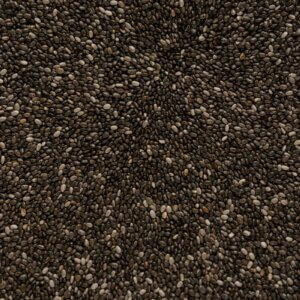









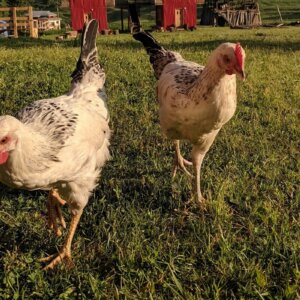

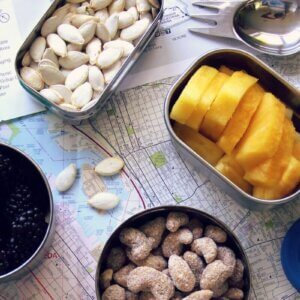




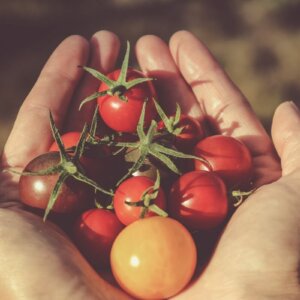
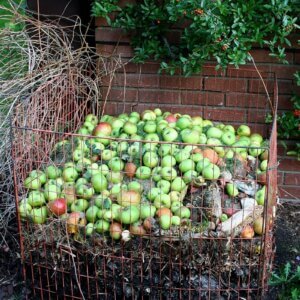





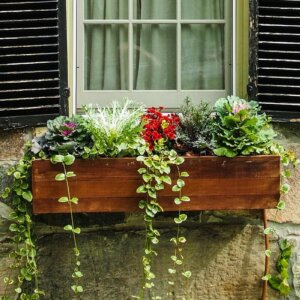

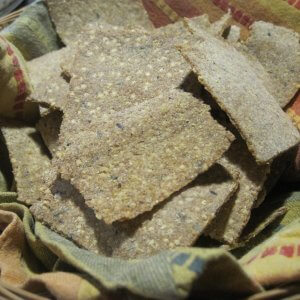


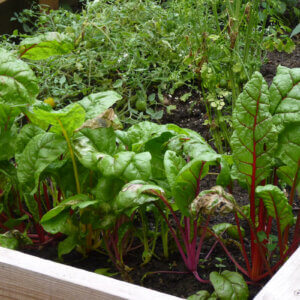
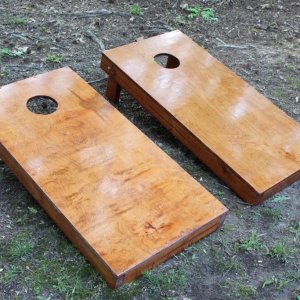





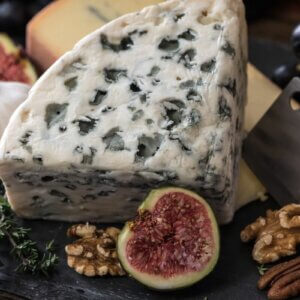


Leave a Reply